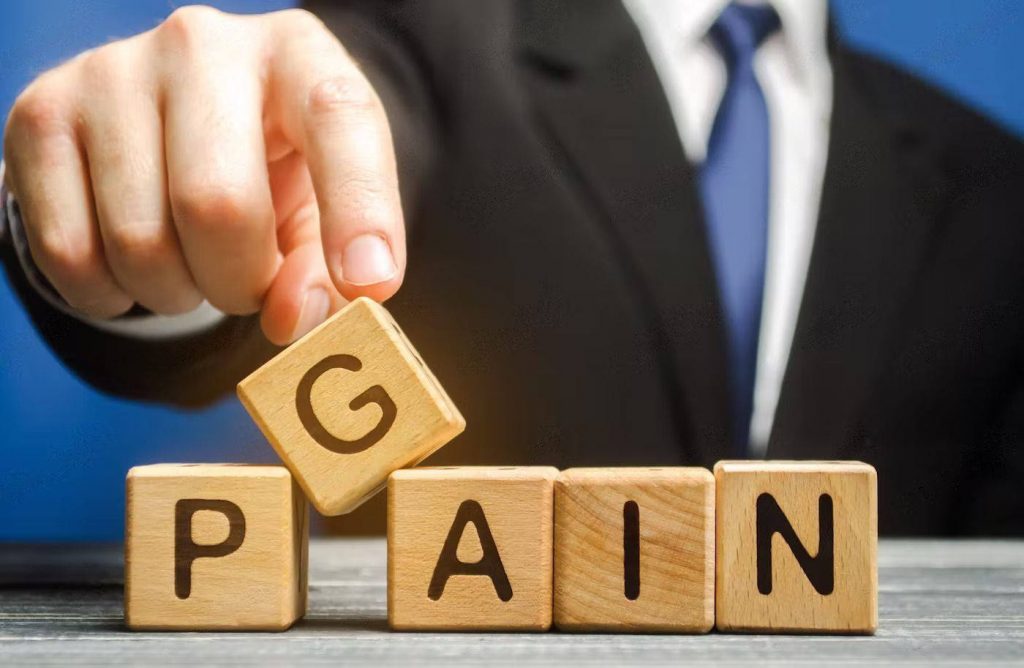Anatomy of an Octogenarian’s Chronic Pain

I’m Barrie, and I warmly welcome you to my monthly blog Over50andfit.ca
Question: Are there methods of managing chronic physical pain without taking medication? Answer: Unequivocally yes.
In February 2020, I was taking my daily 10 km walk when a car reversed from a side path, knocked me unconscious, breaking 12 bones.
A compressed vertebra has generated chronic back pain.
My purpose is to document some of the myriad of methods available for managing pain with the most comfort possible. As my title – an ancient Buddhist proverb – claims: Suffering is Optional.
Mind-Body Interaction
When people think of chronic pain, many focus exclusively on medication. However, there are numerous alternative and diverse techniques available that can help you alleviate pain. In considering pain-management methods, it’s important to acknowledge the mind-body connection, for your mental and physical health interact, and the mind and body are in constant communication.
I have chosen to begin with these techniques which are most benefitting my recovery.
The Power of Positive Language
What if you possess the tools you need to reconstruct the way you think, and can create a more positive mindset? Well actually you do, for the words you use can fuel your mindset. The rationale is that language has the powerful ability to influence the way you think. Tony Robins claims: The words we attach to experiences become our experience. Positive thinking is a crucial part of effective pain management. Affirmations on my fridge serve to keep me focussed: I am strong, I will persevere, and Pain is temporary, it will pass. Also posties in prominent places proclaim: Never give up, Yes I can, Whatever it takes, and Believe and achieve.
Meditation – a Plethora of Benefits
Meditation is the process of training your mind to focus and redirect your thoughts. What helps me the most is focussing on a tranquil scene (I choose a trickling stream in a natural setting) as this enables me to shift my focus from pain. Meditation can produce a deep state of relaxation. Even a few minutes each day can help. I find that deep breathing is a powerful tool for managing pain. A myriad of videos is available online, from courses for complete beginners to those for people who are more advanced.
The Multiple Benefits of Yoga.
Amongst many other benefits, yoga embraces meditation, mental discipline, enhanced breathing, and improved well-being. What has helped me most in controlling my pain is the harmony of mind-body relaxation which yoga has given me. Terecita Blair, a former yoga Instructor of the Year, has an extensive collection of videos for beginners, advanced, and seniors.
The Powerful Benefits of Deep Breathing
The benefits of deep breathing (or diaphragmatic breathing) are invariably underestimated. This technique allows your body to fully exchange incoming oxygen with outgoing carbon dioxide. Sit or lay in a relaxed position. Begin breathing deeply through your nose, allowing your chest and lower belly to rise as you fill your lungs. Hold for a few seconds, and exhale slowly and fully through your mouth (or your nose if that feels more comfortable. Try this for a few minutes. I make this technique a regular daily practice, in cafes, in my car, when walking or whenever. You may wish to try the 4-7-8 technique. You may also want to blend deep beathing with guided imagery routines.
A Plethora of Other Methods Prevail
Working with professionals in the field is paramount to making a huge impact on managing pain and also in performing exercises correctly. I have benefitted from several of these techniques: massage therapy, physiotherapy, acupuncture, chiropractic treatment, naturopathy, aromatherapy, mindfulness, Self Myofacial Release (SMR), hypnotherapy, spinal manipulation, Reiki treatment, intramuscular stimulation (IMS), and counselling with trained professionals. Never underestimate the power of the human spirit: you can manage pain.
More Recent Scientific Studies
If you want to study more recent scientific psycho-social methods, these have been clinically proven to be effective: Cognitive Behaviour Therapy (CBT), Pain Reprocessing Therapy (PRT), and Acceptance Commitment Therapy (ACT): these are the subject of a blog in itself.
Pain Diary: The Write Way to Improve Your Pain Management
Michelle Beauclair, a freelance writer, discusses the immense benefits of keeping a journal to document your journey of chronic pain. She includes what to record, a sample pain log, and lists several apps which can help you track and manage your pain.
Be kind to yourself. Establish realistic expectations, and recognize that you don’t have to be perfect to be happy. Allow your body to relax, release tension, and even reduce pain. With chronic pain, the expectations and a degree of acceptance are often the difference between pain and suffering. We cannot generally choose the challenges which confront us, but we can choose how we face them.
I would be delighted to hear any suggestions you have, and answer any questions at Over50andfit.ca.
Yours in fitness.
Barrie
*** Kindly back our sponsor *** |
| [TAG1]Patricia Marple / AuthorsUSA.com |
By: barriestreet
Title: Pain is Inevitable: Suffering is Optional
Sourced From: www.over50andfit.ca/pain-is-inevitable-suffering-is-optional/
Published Date: Sat, 29 Oct 2022 04:44:05 +0000
Did you miss our previous article...
https://naturesmart.us/fitness/improve-your-training-results-with-body-composition-testing
 HealthWellnessFitnessBeautyVideosPrivacy PolicyTerms And Conditions
HealthWellnessFitnessBeautyVideosPrivacy PolicyTerms And Conditions
